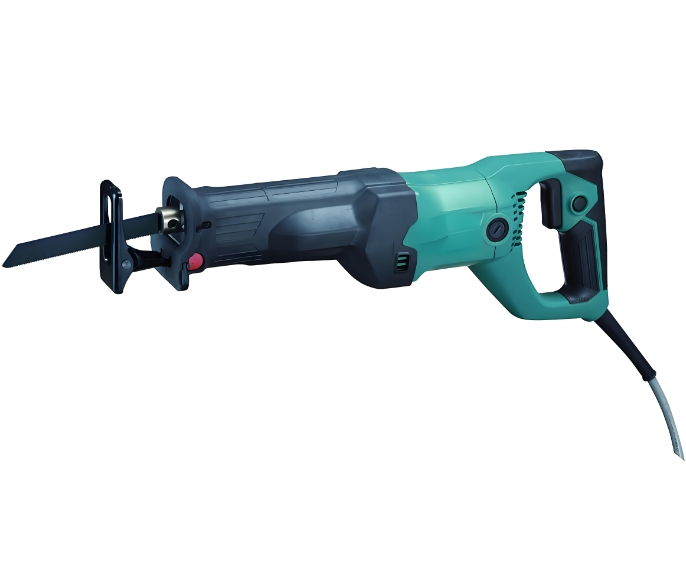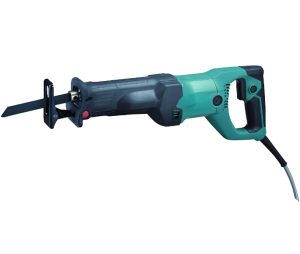Our Location
304 North Cardinal St.
Dorchester Center, MA 02124

Reciprocating saws, also known as sawzalls or sabre saws, are versatile power tools that are indispensable in construction, demolition, and various DIY projects. They can cut through a wide range of materials, including wood, metal, and plastic, making them a go-to tool for professionals and hobbyists alike. When choosing a reciprocating saw, one of the most significant decisions to make is whether to go for a corded or cordless model. Each type has its advantages and disadvantages, which can significantly impact your work efficiency, convenience, and overall satisfaction with the tool.
Corded reciprocating saws are known for their consistent and robust power output. Since they draw electricity directly from an outlet, they can maintain high performance levels without the risk of battery depletion. This continuous power supply makes them ideal for heavy-duty tasks and prolonged use. For instance, when working on extensive demolition projects or cutting through dense materials, the unwavering power of a corded saw ensures that the job can be completed without interruptions.
The motor power of corded saws typically ranges from 7 to 15 amps, providing ample force to tackle tough materials with ease. Additionally, corded models often come with variable speed controls, allowing users to adjust the speed based on the task at hand. This feature enhances precision and control, making corded saws a preferred choice for professionals who require reliable performance under demanding conditions.
Cordless reciprocating saws offer the advantage of portability and convenience. Powered by rechargeable batteries, these saws eliminate the need for an electrical outlet, providing greater freedom of movement. This is particularly beneficial for outdoor projects, remote locations, or areas with limited access to power sources. Modern cordless models are equipped with lithium-ion batteries, which offer improved runtime and faster charging compared to older battery technologies.
While the power of cordless saws has traditionally lagged behind their corded counterparts, advancements in battery technology have significantly closed the gap. High-capacity batteries, combined with efficient brushless motors, enable cordless saws to deliver impressive cutting performance. However, it’s important to note that the runtime of cordless saws is limited by battery life, which can vary depending on the intensity of the work and the capacity of the battery. Users often need to have spare batteries on hand to ensure uninterrupted operation.
The primary drawback of corded reciprocating saws is their reliance on an electrical outlet. This requirement can limit mobility, especially in large workspaces or outdoor environments where power sources may be scarce. The presence of a cord can also be cumbersome, potentially getting tangled or causing tripping hazards. Extension cords can mitigate some of these issues, but they can introduce additional complications, such as voltage drops or added bulk.
Despite these limitations, corded saws are generally lighter than cordless models because they do not carry the extra weight of a battery. This can reduce user fatigue during prolonged use, making them a practical choice for extended projects.
The standout feature of cordless reciprocating saws is their portability. Without the need for a power cord, users can move freely around the job site, accessing tight spaces and hard-to-reach areas with ease. This mobility is particularly advantageous for tasks that require frequent repositioning, such as pruning trees, working on ladders, or navigating cluttered construction sites.
However, the added weight of the battery can make cordless saws heavier and more cumbersome to handle over long periods. Additionally, users must manage battery life, ensuring that batteries are charged and ready to go. Investing in multiple batteries and a fast charger can help mitigate downtime, but it also adds to the overall cost and complexity of the tool.

Corded reciprocating saws are generally more durable and require less maintenance compared to their cordless counterparts. The absence of a battery reduces the number of components that can wear out or fail over time. Corded models are also less susceptible to issues related to battery degradation, such as reduced runtime or capacity over the lifespan of the tool.
Maintenance for corded saws typically involves regular cleaning, blade replacement, and occasional lubrication of moving parts. Since they are often used in heavy-duty applications, ensuring that the motor and components are free from dust and debris is crucial for maintaining optimal performance.
Cordless reciprocating saws require more maintenance due to their reliance on batteries. Users need to monitor battery health, charge cycles, and storage conditions to prolong battery life. Lithium-ion batteries, while more robust than older technologies, can still degrade over time, leading to reduced performance and shorter runtimes.
In addition to battery maintenance, cordless saws also need regular cleaning and lubrication. The increased complexity of cordless models, with additional electronics and battery management systems, can sometimes lead to higher repair costs and more frequent servicing needs.
Corded reciprocating saws are generally more affordable than cordless models. The absence of a battery system reduces manufacturing costs, and these savings are often passed on to the consumer. Additionally, corded saws do not require the purchase of additional batteries or chargers, further lowering the overall cost of ownership.
For professionals and DIY enthusiasts on a budget, a corded saw can provide excellent value, offering reliable performance at a lower price point. However, it’s essential to factor in the potential need for extension cords and the inconvenience of limited mobility when assessing the total cost.
Cordless reciprocating saws typically come with a higher initial price tag due to the inclusion of batteries and chargers. High-capacity lithium-ion batteries and advanced motor technologies contribute to the increased cost. Moreover, users may need to invest in extra batteries and a fast charger to ensure continuous operation, adding to the overall expense.
Despite the higher upfront cost, the convenience and portability of cordless saws can justify the investment for many users. For professionals who frequently work in remote or variable locations, the ability to move freely without being tethered to an outlet can significantly enhance productivity and job satisfaction.
When deciding between a corded and cordless reciprocating saw, it’s essential to consider the specific requirements of your projects and work environment. Here are some key factors to keep in mind:
The choice between a corded and cordless reciprocating saw ultimately depends on your specific needs, work environment, and budget. Corded saws provide reliable, uninterrupted power ideal for heavy-duty and continuous use, while cordless saws offer unparalleled portability and convenience for dynamic and remote tasks. By carefully considering the factors outlined above, you can select the reciprocating saw that best aligns with your requirements, ensuring that your investment enhances your productivity and satisfaction with your work.
Whether you’re a professional contractor or a DIY enthusiast, understanding the strengths and limitations of each type of reciprocating saw will empower you to make an informed decision, maximizing the effectiveness and enjoyment of your projects.